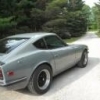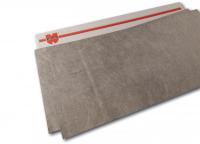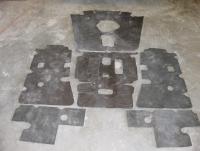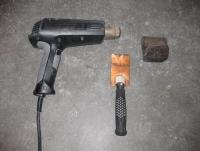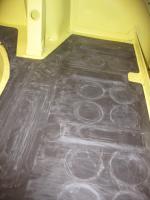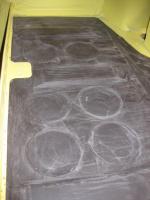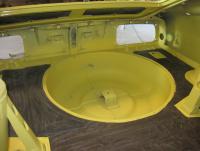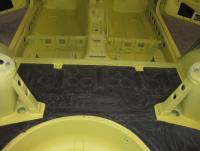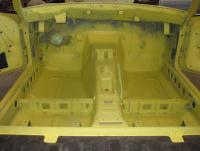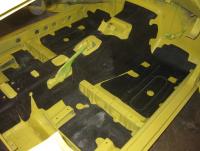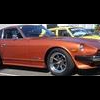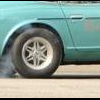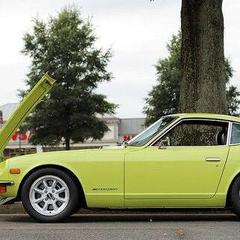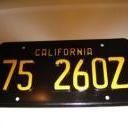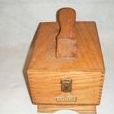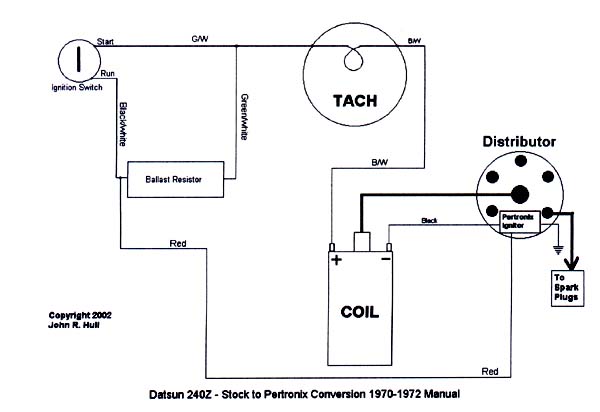Since there has always seemed to be a lot of threads with people in need of help with their 280z EFI systems, I have come up with an idea that might get those people in need of help on the right track and give them a little basic knowledge about how the fi's on these cars work! This in return would give us a break on not having to explain everything and how the efi system work so often as they could refer back to the sticky post for those types of questions. Not only this, but they could refer back that post for example and they will know what the parts are called so there wouldn't be anymore of the "black part on the top left", but the actual name and part so we would know exactly what their talking about the first time. I'm not however implying that this post would be all the answers to all their techincal questions, that's not the point of it. The point is to give them a basic understanding of how the Bosch efi system works on these cars and what the parts are called before they ask their question. That's why the sticky post would be called "Please read before you post your efi question" at the top of the help and fi sections of the forum. Basically this might include a link to the atlantic Z car page and a link to the the efi bible. Better yet, a diagram that shows the names of all the parts on the fi system that could be posted right into the post so it's easier to refer to for part names without clicking the links. I would do this from my book, but my scannor I can't seem to get my scanner to work. Before I posted this, I pm'd Stephen (sblake01) as he is our big fi guy here on the board and he thought that is was a good idea so I forwarded the message to Mike who in return liked the idea. There are down sides to everything, and like Stephen mentioned, different model years differ and sometimes these cars get tampered with by previous owners. This is why it would be great if all you efi guys could chip in and post links, diagrams information, common problems (all efi related) or whatever you feel is necessary to be included in this post. Please keep it as simple as possible. Since a lot of us own different years of 280Z's, you might have some stuff to chip in on here as you're familiar with that particular year of car. Hopefully you see what I'm getting at. I will wait maybe a week or so and this will go you all a good chance to post what you want into the post. Once this is done, I will copy and paste everything into one post and send it to Mike who in return be the one to make the sticky post. Like I said my scanner is not working at this time to post that diagram of the efi names and pictures of each part, but will keep working on it. Here are the links to the EFI bible and the Atlantic Z car page. I will start off: Electronic Fuel pump- Pumps fuel from the tank to the engine Fuel Damper- Acts as "muffler- that is, it keeps pressure surges from making noises which could be heard by the driver Fuel Filter- Filters out particles in the fuel before reaching the inectors Fuel injector- Spray fuel into the combustion chamber Dropping Resistor- Causes a voltage drop so that the injector operates on less battery voltage and also protects the injector from voltage surges coming from the alternator from the effects of other parts in the electrical system. Electronic Control Unit (ECU)- Controls the injectors by turning their ground on and off. Governs how much fuel is injected by holding the injectors open for longer or shorter periods of time. Fuel Pressure Regulator (FPR)- Keep the pressure in the fuel system to a constant 36 psi. Air Flow Meter (AFM)- Measures the amount of air coming into the intake mainifold. The more air passing through, the farther the flap inside will be pushed open. Idle speed screw- Use it to adjust the idle speed Throttle Position Switch(TPS)- Contains a set of contacts inside that tell the ecu if the engine is either idling or declerating. Water Temperature Sensor- Allows the ecu to richen the mixture until the engine arrives at opperating temperature. Air Temperature Sensor- Measures the temperature of the air coming in from the air cleaner. Cold Start Valve- A seventh injector to add additional fuel on a cold start up. Only gets current when the starter is cranking. Thermotime Switch- Opperates according to both temperature and time. (Hopefully somebody can come up with a better definition than that). Air regulator- Allows the engine to be at a fast idle to aid in warm up. http://www.atlanticz.ca/zclub/techtips/EFI&fuel.htm http://www.atlanticz.ca/zclub/techti...ectionbook.pdf http://www.atlanticz.ca/zclub/techti...e_Bulletin.pdf Please chip in what you would like to see in this post!





